|
Books Should Be Free Loyal Books Free Public Domain Audiobooks & eBook Downloads |
|
|
Books Should Be Free Loyal Books Free Public Domain Audiobooks & eBook Downloads |
|
Literature |
|---|
|
Book type:
Sort by:
View by:
|
By: Floyd L. Wallace (1915-2004) | |
|---|---|
 Mezzerow Loves Company
Mezzerow Loves Company
| |
By: Ford Madox Ford (1873-1939) | |
|---|---|
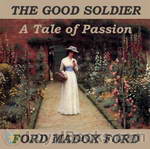 The Good Soldier
The Good Soldier
The Good Soldier (1915) "... is set just before World War I and chronicles the tragedies of the lives of two seemingly perfect couples. The novel is told using a series of flashbacks in non-chronological order, a literary technique pioneered by Ford. It also makes use of the device of the unreliable narrator, as the main character gradually reveals a version of events that is quite different from what the introduction leads you to believe. The novel was loosely based on two incidents of adultery and on Ford's messy personal life.”Music in sections 1-5 "Minuet in G flat major and Valse Bluette" by Beethoven | |
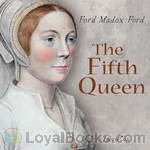 The Fifth Queen
The Fifth Queen
The Fifth Queen trilogy is a series of connected historical novels by English novelist Ford Madox Ford. It consists of three novels, The Fifth Queen; And How She Came to Court (1906), Privy Seal (1907) and The Fifth Queen Crowned (1908), which present a highly fictionalized account of Katharine Howard's marriage to King Henry VIII. | |
 Romance
Romance
| |
 Privy Seal His Last Venture
Privy Seal His Last Venture
| |
 The Fifth Queen Crowned
The Fifth Queen Crowned
| |
 Some Do Not...
Some Do Not...
Set immediately before and during the Great War, Some Do Not... is a tale of social cruelty among the English upper classes that pits real honour against shameless duplicity and subjects its principal characters to extremes of mental suffering that appear to be analogous to the physical horrors of the actual fighting. The plot revolves around the mores and desires of the intellectually brilliant but impossibly high-minded Christopher Tietjens, his icy wife Sylvia, and Valentine Wannop, a poor but well-educated young woman who loves Christopher, and is in many ways his moral and intellectual equal... | |
 No More Parades
No More Parades
When No More Parades was first published in 1925, a critic in The Observer wrote of the first 100 pages that they "easily surpass in truth, brilliance and subtlety everything else that has yet been written in England about the physical circumstances and moral atmosphere of the war". The second novel in the Parade's End tetralogy, No More Parades places army captain Christopher Tietjens, his beautiful but cruel wife Sylvia, and Tietjens' jealous and tempestuous godfather and commanding officer General... | |
 Man Could Stand Up
Man Could Stand Up
'A Man Could Stand Up' is the third, and culminating, part of Ford Madox Ford's 'Parade's End' tetralogy of novels, which begins with 'Some Do Not', followed by 'No More Parades', and whose coda would be 'Last Post'. While 'A Man Could Stand Up' can be appreciated on its own, it will make far better sense to a listener or reader already familiar with its predecessors. It's at once a war story , a story of immense upheaval in social mores, and a passionate, if extraordinarily restrained, love story. Just like, say, Virginia Woofe's 'Mrs Dalloway', published the previous year, Ford's novel is pitched at readers who are assumed to be highly literate and well-educated. | |
By: Forrest J. Ackerman (1916-2008) | |
|---|---|
 Out of This World Convention
Out of This World Convention
| |
By: Fr. Pierre-Jean De Smet (1801-1873) | |
|---|---|
 De Smet's Letters and Sketches, 1841-1842
De Smet's Letters and Sketches, 1841-1842
In 1841 and 1842, Fr. Pierre-Jean DeSmet traversed the wide and wild American West to bring the gospel to the Flatheads, who had sent multiple delegations from Montana to St. Louis, repeatedly requesting a Blackgown priest to instruct them in Christianity. Fr. DeSmet’s letters to his Jesuit Superiors show his heroic religious dedication and selflessness, as he recounts fatigues, hunger, thirst, and dangers that rival those of the apostle St. Paul. He also makes intelligent observations of geography, geology, weather , and the interesting customs of the different tribes he meets... | |
By: Frances Barton Fox (1887-) | |
|---|---|
 The Heart of Arethusa
The Heart of Arethusa
| |
By: Frances Bowyer Vaux | |
|---|---|
 Domestic Pleasures, or, the Happy Fire-side
Domestic Pleasures, or, the Happy Fire-side
| |
By: Frances Boyd Calhoun (1867-1909) | |
|---|---|
 Miss Minerva and William Green Hill
Miss Minerva and William Green Hill
| |
By: Frances Brooke | |
|---|---|
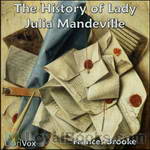 The History of Lady Julia Mandeville
The History of Lady Julia Mandeville
Lady Julia, the daughter of the Earl of Belmont, and Mr. Henry Mandeville are falling in love. Though Henry is like a family friend, this love is not welcomed because the Lady Julia is promised to someone else (or so Henry thinks). When they discover that they can be together after all, it is much too late. This novel, written in the form of letters, as are a lot of 18th century novels, shows their beautiful and echoing love story through the eyes of many people. | |
By: Frances Burney (1752-1840) | |
|---|---|
 The Wanderer
The Wanderer
This is the fourth and final novel by Fanny Burney, the author of Evelina, Cecilia, and Camilla. "Who is "Miss Ellis?" Why did she board a ship from France to England at the beginning of the French revolution? Anyway, the loss of her purse made this strange "wanderer" dependent upon the charity of some good people and, of course, bad ones. But she always comforts herself by reminding herself that it's better than "what might have been..." This is not only a mystery, not at all. It's also a romance which reminds readers of novels by Jane Austen... | |
By: Frances Fuller Victor (1826-1902) | |
|---|---|
 The New Penelope and Other Stories and Poems
The New Penelope and Other Stories and Poems
| |
By: Frances Hodgson Burnett (1849-1924) | |
|---|---|
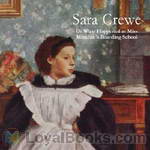 Sara Crewe: or, What Happened at Miss Minchin's Boarding School
Sara Crewe: or, What Happened at Miss Minchin's Boarding School
The story told in Frances Hodgson Burnett’s classic novel, A Little Princess, was first written as a serialized novella, Sara Crewe, or What Happened at Miss Minchin’s, and published in St. Nicholas Magazine, in 1888. It tells the story of Sara Crewe, an intelligent, wealthy, young girl at Miss Minchin’s Select Seminary for Young Ladies. Sara’s fortunes change when her father dies, and she goes from being a show pupil and parlor boarder at the school to a drudge, but eventually she finds happiness and a home again. | |
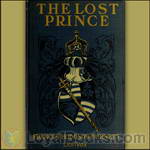 The Lost Prince
The Lost Prince
“The Lost Prince” is about Marco Loristan, his father, and his friend, a street urchin named The Rat. Marco’s father, Stefan, is a Samavian patriot working to overthrow the cruel dictatorship in the kingdom of Samavia. Marco and his father, Stefan, come to London where Marco strikes up a friendship with a crippled street urchin known as The Rat. Marco’s father, realizing that two boys are less likely to be noticed, entrusts them with a secret mission to travel across Europe giving the secret sign: ‘The Lamp is lighted... | |
 The Shuttle
The Shuttle
Rosalie Vanderpoel, the daughter of an American multimillionaire marries an impoverished English baronet and goes to live in England. She all but loses contact with her family in America. Years later her younger sister Bettina, beautiful, intelligent and extremely rich, goes to England to find what has happened to her sister. She finds Rosalie shabby and dispirited, cowed by her husband's ill treatment. Bettina sets about to rectify matters. She meets Lord Mount Dunstan, an impoverished earl, who lives nearby and they fall in love, but he cannot speak because it would look as if he were after her money... | |
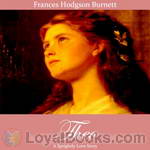 Theo
Theo
It's described as "A SPRIGHTLY LOVE STORY" and it is written by F. H. Burnett, "one of the most charming among American writers!" | |
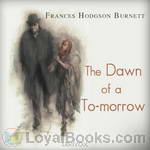 The Dawn of a To-morrow
The Dawn of a To-morrow
A wealthy London business man takes a room in a poor part of the city. He is depressed and has decided to take his life by going the next day to purchase a hand gun he had seen in a pawnshop window. The morning comes with one of those 'memorable fogs' and the adventure he has in it alters his decisions and ultimately his life. | |
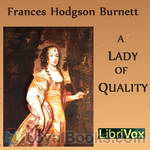 A Lady of Quality
A Lady of Quality
Set in late 1600's England, the story follows the life of a woman living an unconventional life. The loves of her life and all of its ups and downs are included. | |
 In the Closed Room
In the Closed Room
This is a short story about a shy, quiet little girl living in a big city. When her parents are offered the opportunity to take care of a house in the suburbs for the summer she meets another little girl in the house and they become playmates. (Introduction by Linda Andrus) | |
 Emily Fox-Seton
Emily Fox-Seton
Have you ever wondered what happened to Cinderella after she married the prince? Have you ever asked yourself if it was really "happy ever after?" Actually, in this Victorian melodrama, it's not. 35-years-old Emily Fox-Seton, quite penniless and a little lonely, saves herself from becoming an old maid by agreeing to a marriage proposal from the marquess of Walderhurst, thus becoming "one of the richest Marchionesses in England". She is naïve, kind and good. She doesn't believe that people are really willing to hurt her, but why are all these strange accidents happening?This novel is divided into 2 parts... | |
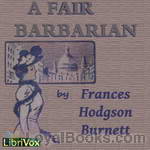 A Fair Barbarian
A Fair Barbarian
The setting is a small English village in the 19th century. When her niece shows up on her doorstep unexpectedly, a quiet spinster finds her life turned upside down. | |
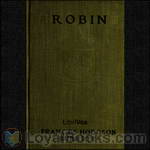 Robin
Robin
Starting with a summary of the 1922 novel The Head of the House of Coombe, which followed the relationships between a group of pre-WWI English nobles and commoners, this sequel, called Robin, completes the story of Robin, Lord Coombe, Donal and Feather. (Introduction by Linda Andrus) | |
 Racketty-Packetty House
Racketty-Packetty House
| |
 The Land of the Blue Flower
The Land of the Blue Flower
| |
 The White People
The White People
| |
 The Head of the House of Coombe
The Head of the House of Coombe
| |
 Esmeralda
Esmeralda
| |
 Vagabondia 1884
Vagabondia 1884
| |
 The Little Hunchback Zia
The Little Hunchback Zia
| |
 "Seth"
"Seth"
| |
 That Lass O' Lowrie's 1877
That Lass O' Lowrie's 1877
Frances Hodgson Burnett was born and grew up in Manchester, England, and emigrated to the United States with her family at the age of 16. For her first novels, written in Knoxville, Tennessee and published in New York, she drew upon her knowledge of life and speech of the Lancashire working classes. Set in a Lancashire mining town, That Lass o' Lowries is a gritty, and at times brutal, tale of romance across the classes, which stands in stark contrast to her later work. | |
 In Connection with the De Willoughby Claim
In Connection with the De Willoughby Claim
| |
 My Robin
My Robin
| |
 Mère Giraud's Little Daughter
Mère Giraud's Little Daughter
| |
 "Le Monsieur de la Petite Dame"
"Le Monsieur de la Petite Dame"
| |
 Lodusky
Lodusky
| |
 One Day At Arle
One Day At Arle
| |
 "Surly Tim" A Lancashire Story
"Surly Tim" A Lancashire Story
| |
 Miss Crespigny
Miss Crespigny
This is a less known, but not less beautiful, novel by the author of The Secret Garden, A Little Princess, The Lost Prince, Little Lord Fauntleroy, The Shuttle, and many more. There is something different about miss Lysbeth Crespigny. Raised by three maiden aunts and sheltered from the world, she leaves them for the first time in order to explore the world. Yet she is often misunderstood. The world she discovers is more complicated and confusing then she anticipates. She is only 18 when the book starts. However the choices she has to make have consequences which she learns to navigate and become the strong woman she can be. - Summary by Stav Nisser. | |
By: Frances Little (1863-1941) | |
|---|---|
 The Lady of the Decoration
The Lady of the Decoration
| |
 Little Sister Snow (version 2)
Little Sister Snow (version 2)
American author Fannie Caldwell, under pen name of Frances Little, tells the story of young Yuki San growing up in Japan circa early 1900s, and of her dreams of an American. (Introduction by Cheri Gardner) | |
 The House of the Misty Star A Romance of Youth and Hope and Love in Old Japan
The House of the Misty Star A Romance of Youth and Hope and Love in Old Japan
| |
 Mr. Bamboo and the Honorable Little God A Christmas Story
Mr. Bamboo and the Honorable Little God A Christmas Story
| |
 The Lady and Sada San A Sequel to the Lady of the Decoration
The Lady and Sada San A Sequel to the Lady of the Decoration
| |
By: Frances Milton Trollope (1779-1863) | |
|---|---|
 Vicar of Wrexhill
Vicar of Wrexhill
A villainous vicar insinuates himself into the life of a wealthy but foolish widow, ruining the fortunes and happiness of her three children, until they begin to fight back. Published in 1837 by the mother of the better-known Anthony Trollope, this highly readable romance portrays the evangelical movement of the Anglican church in a shocking light that may remind readers of some of the religious abuses of the present day. | |
By: Frances R. (Frances Roberta) Sterrett (1869-1947) | |
|---|---|
 Mary Rose of Mifflin
Mary Rose of Mifflin
| |
By: Francesco Colonna (-1527) | |
|---|---|
 Hypnerotomachia The Strife of Loue in a Dreame
Hypnerotomachia The Strife of Loue in a Dreame
| |
By: Francesco Petrarca (1304-1374) | |
|---|---|
 The Sonnets, Triumphs, and Other Poems of Petrarch
The Sonnets, Triumphs, and Other Poems of Petrarch
| |
By: Francis A. (Francis Alexander) Durivage (1814-1881) | |
|---|---|
 The Three Brides, Love in a Cottage, and Other Tales
The Three Brides, Love in a Cottage, and Other Tales
| |
By: Francis Asbury Smith (1837-1915) | |
|---|---|
 The Critics Versus Shakspere A Brief for the Defendant
The Critics Versus Shakspere A Brief for the Defendant
| |
By: Francis Bacon (1561-1626) | |
|---|---|
 The Essays of Francis Bacon
The Essays of Francis Bacon
Among the many ideas explored in this book are beauty, gardens, honor and reputation, cunning, nobility, friendship and many others. Authored by the man who is credited with having invented the essay form in English, The Essays of Francis Bacon was written over an extended period, ranging from the mid sixteenth century. They were compiled in a single edition in 1597 and later re-written, enlarged and added to in other editions in 1612 and 1625. However, their compelling and insightful quality still appears fresh and appealing to modern day readers... | |
 The New Atlantis
The New Atlantis
In 1623, Francis Bacon expressed his aspirations and ideas in New Atlantis. Released in 1627, this was his creation of an ideal land where people were kind, knowledgeable, and civic-minded. Part of this new land was his perfect college, a vision for our modern research universities. Islands he had visited may have served as models for his ideas. | |
By: Francis Bickford Hornbrooke (1849-1903) | |
|---|---|
 Ring and the Book - An Interpretation
Ring and the Book - An Interpretation
Francis Bickford Hornbrooke was an American Unitarian minister who in later years was recognized as an expert commentator on literature, in particular the works of Robert Browning. Of all Browning's output, it was his monumental epic, the Ring and the Book, which most attracted Hornbrooke's attention, and he said that " I have read the poem throughout at least thirty times, and every time with increased pleasure. The more I read it, the more I love it, and the less I find in it to censure." His interpretation... | |
By: Francis Brett Young (1884-1954) | |
|---|---|
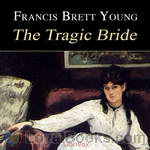 The Tragic Bride
The Tragic Bride
The story centers on Gabrielle Hewish, only and lonely child of Sir Jocelyn Hewish, a loveable lush and owner of the peaceful Roscarna estate nestled in the Irish countryside. In due course, young Gabrielle falls in love with a Navy man whose untimely demise sends her into a depression, and the consequences of which alter her future, culminating in a fascinating and quite unpredictable relationship with Mrs. Payne and her troubled son Arthur. A story of understanding in it’s finest sense and aptly titled, The Tragic Bride is both interesting as a story and telling as a character study. | |
By: Francis C. Woodworth (1812-1859) | |
|---|---|
 The Diving Bell Or, Pearls to be Sought for
The Diving Bell Or, Pearls to be Sought for
| |